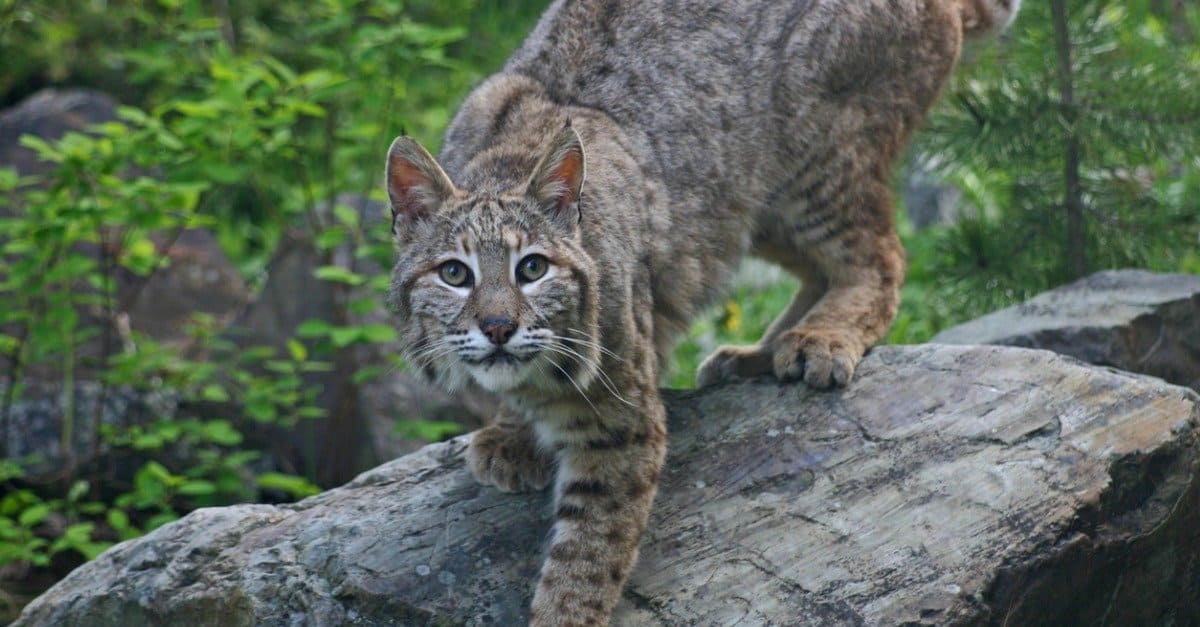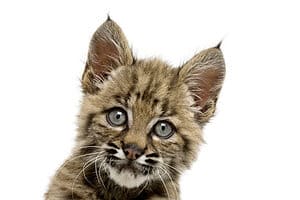Illinois is known for Chicago, which is not the state’s capital but rather its greatest metropolis. Some people may be astonished to find that Illinois has any significant fauna. Even so, there are natural areas close to Chicago. The abundance of wild animals in Illinois is made possible by the state’s many wildlife refuges. However, when it comes to wild cats, only one native species roams around the state today. Are these wild cats bobcats?
The most prevalent wild cat, bobcats, are native to specific parts of the continent. But not all of the states in the nation have bobcats. Although some states have bobcat populations that are strong and healthy and large enough to permit legal hunting and trapping, the species is categorized as vulnerable in several states due to declining numbers. What is the status of bobcats in Illinois? Are they endangered? This article discusses everything you need to know about bobcats in the Prairie State.
Are There Bobcats in Illinois?

There’s a thriving population of bobcats in Illinois.
©Victor Arita/Shutterstock.com
Yes, Illinois is one of the fortunate states in the United States that hosts a thriving population of bobcats. In the 19th and early 20th centuries, these cats were on the verge of extinction as they were hunted for pelts and were slain as they posed a hazard to livestock.
By the mid-1900s, bobcats practically disappeared from Illinois, and from 1977 through 1999, they were safeguarded in Illinois as a threatened species. The bobcat colony in Illinois has increased from being threatened to thriving. The wild cat species’ population has, in fact, been increasing in the state since 2016.
Bobcats were formerly common throughout the Midwest’s complexes of prairie woodlands, but they were regarded as rare in the Corn Belt during the century that followed European settlement (1840s–1940s). Following their original protection under the Wildlife Code, bobcats were recognized by the Illinois Department of Natural Resources (IDNR) as a state-threatened species in 1977.
Although they are now widespread in Illinois, they are more prevalent in the southern third of the state. Home ranges for bobcats can be pretty large. According to research in southern Illinois, male and female bobcats have yearly home ranges of seven-and-a-half to 20 and three-and-a-half to six square miles, respectively.
How Did Bobcats Come Back To Illinois?
Since bobcats were classed as threatened, the following years saw a restriction on harvest, which led to an upsurge in bobcat sightings across the state in the 1990s. Bobcats were taken off the state’s vulnerable species list in Illinois in 1999, and the state’s first harvest season in over four decades was enacted in 2015.
In 2016, a controlled bobcat season was started in Illinois due to the bobcat population’s growth and rising abundance. The IDNR controls bobcat harvest to preserve a healthy population that provides opportunities for hunters and trappers while ensuring a steady or expanding population. The bobcat population in the entire state is expected to increase, particularly along significant rivers and forested areas.
Where Can You See Bobcats in Illinois?

Although bobcat sightings are possible all over Illinois, the southern section of the state is where you’re most likely to find them.
© Johann Knox/Shutterstock.com
If you live in the Prairie State, you might not see a bobcat very often, but that doesn’t mean they aren’t there. In Illinois, there are about 5,000 bobcats. They are flexible cats that can survive in a variety of environments.
Bobcats favor heavy forests; fields and margins of forests are employed for hunting prey, whereas wooded habitat is used as cover and denning location. Although bobcat sightings are possible all over Illinois, the southern section of the state is where you’re most likely to find them.
Bobcat Hunting in Illinois
Conservationists, especially hunters and trappers, advocated legislative measures for improved protection and management of wildlife and wild spaces as wildlife numbers decreased across the nation. Modern wildlife management ideas developed with time, and even predators like wolves and bobcats were given some protection. The situation for bobcats and many other wildlife species in Illinois and across the United States has improved thanks to these safeguards, changes in land use, the implementation of game regulations by Conservation Police, and subsidies for habitat restoration.
Managers keep an eye on the populations and permit a controlled hunting and trapping season that allows a limited amount of animal harvest and consumption without jeopardizing the populations. More than 120 bobcats have been radio-collared since 1995 and have been tracked throughout their everyday lives.
Bobcats were taken off Illinois’ list of state-threatened species in 1999 after being found in 99 of the state’s 102 counties. The bobcat joined the 13 other species of furbearers that have set seasons for hunting or trapping in 2016. The regular bobcat trapping season runs from November 10 to February 15.
How Many Bobcats Are in Illinois?

There are about 5,000 bobcats in Illinois.
©iStock.com/twildlife
The number of bobcats in Illinois is increasing. The Illinois Bobcat Foundation estimates that more than 5,000 bobcats are scurrying about in 99 of the state’s 102 counties. Over the past three years, there have been numerous reports in the Southern Wisconsin and Chicago suburbs. After more than four decades, the first season of bobcat hunting and trapping was permitted to start in 2016. Every 1,000 hours of observation, there were 6.5 bobcats seen by hunters, as of 2018.
Up Next:
Bobcats in Michigan: Types & Where They Live
Bobcats in Georgia: Types & Where They Live
Thank you for reading! Have some feedback for us? Contact the AZ Animals editorial team.








